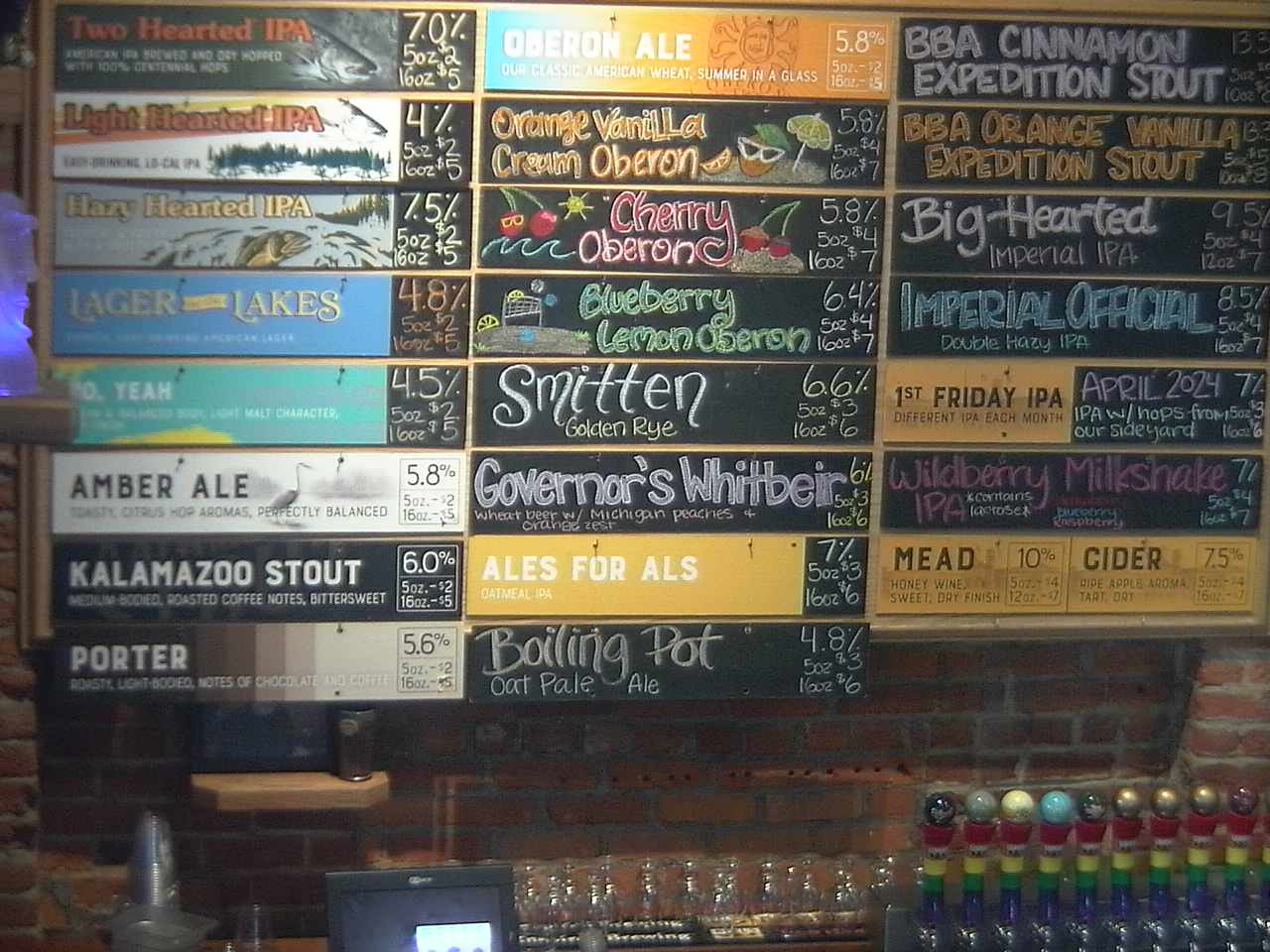PUP w/ Snotty Nose Rez Kids
2023 Bell’s Beer Garden Series21+ EventStanding Room Only Every PUP record arrives with an implied “contents under pressure” warning; the tension between the band’s instinct for the melodic and its gift for chaos propels the songs forward while making them also seem close to flying apart in a horrifying spray of tears and gore. To listen to PUP enough is to spend parts of every day mentally echoing some hilariously self-lacerating, utterly undeniable choruses; you will find yourself thinking “this is the mosh part” at moments when you would otherwise be tearing yourself apart. All that tension is always just barely held in place by the band’s craft. It couldn’t be anything but uneasy, but THE UNRAVELING OF PUPTHEBAND is the sound of a band that is not just comfortable with but in command of that chaos. PUP is not really that kind of band, though, and THE UNRAVELING OF PUPTHEBAND is not that kind of record. It is still very much a PUP album, but relocating from the literal basement where they wrote Morbid Stuff to the janky manse in which they put together its follow-up afforded the band space to grow, and to make not just the next PUP record but the most PUP record. There is no faking that, which of course makes it all much harder to do. In the best PUP songs, the whole process is not just visible but thrilling—the anguish and doubt that drives the songs is nurtured, over a few loud minutes, into something first legible and then somehow empowering. There are a lot of these songs on THE UNRAVELING. The alternately plaintive and anthemic “Matilda” is a classic galloping PUP shout-along recrimination-fest that sounds bigger than previous entries in this robust subgenre without losing any of the signature acid. “Waiting” is pure paint-stripping heat, topped by some legitimately towering choruses. “Robot Writes A Love Song” dissolves into a wash of nervous synthesizer before becoming what is surely the most emotional song ever written from the perspective of a computer being overwhelmed unto death by actual human emotions. THE UNRAVELING is not a departure from what got PUP here, really; for all the new breadth, this is still very much the fourth album by the band that has spun songs about The Bad Decisions Lifestyle into scrappy art. The hooks are as bright and barbed as always; the poison threaded through every song is no less potent. But a fourth album should be different from the first, or even the third, and THE UNRAVELING is. THE UNRAVELING OF PUPTHEBAND is that next step—not towards perfection, or even towards some more perfect version of writing songs about fucking up, but just in the direction of its choice. It’s a product of this endless awful broader moment, but also very much a step forward into that uncertainty. “The whole album process really brought us closer together, even as things unraveled,” Babcock says. “It’s hands down my favorite PUP record, and I don’t think it could’ve been made under any other circumstances.” It’s the sound of a band learning how to share the mansion with the bats.
Relix Presents Yonder Mountain String Band, Railroad Earth, & Leftover Salmon
2023 Bell’s Beer Garden Summer Concert Series21 + event Yonder Mountain: At 25 years old, Yonder Mountain String Band continues to exist at the forefront of the progressive bluegrass scene as undeniable innovators and pioneers of the modern jamgrass movement. Blending bluegrass with elements of rock, alternative, psychedelic and improvisational music, Yonder Mountain String Band brought their high-energy acoustic sound into rock n’ roll settings with tremendous success, proving it was possible for a bluegrass band to not only exist but excel in a rock world, without drums. The inroads they made created opportunities for like-minded acoustic bands to perform at festivals, rock clubs, theaters and stadiums previously considered off-limits for string bands. Yonder Mountain’s high-energy sound, compelling original music and anything goes attitude cultivated a spirit of collaborative improvisation that continues to fuel today’s progressive bluegrass and jamgrass scenes. It is a testament to the legacy of Yonder Mountain String Band that their original songs and unique interpretations/arrangements of covers are regularly performed by next generation bands in the scene. Yonder Mountain String Band celebrates their quarter century mark with a Grammy Nomination for their 2022 release, Get Yourself Outside, and an induction into the Colorado Music Hall of Fame.Railroad Earth: For over two decades, Railroad Earth has captivated audiences with gleefully unpredictable live shows and eloquent and elevated studio output. The group introduced its signature sound on 2001’s The Black Bear Sessions. Between selling out hallowed venues such as Red Rocks Amphitheatre in Morrison, CO, they’ve launched the longstanding annual Hangtown Music Festival in Placerville, CA and Hillberry: The Harvest Moon Festival in Ozark, AR—both running for a decade-plus. Sought after by legends, the John Denver Estate tapped them to put lyrics penned by the late John Denver to music on the 2019 vinyl EP, Railroad Earth: The John Denver Letters. Beyond tallying tens of millions of streams, the collective have earned widespread critical acclaim from David Fricke of Rolling Stone, American Songwriter, Glide Magazine, and NPR.Leftover Salmon: Few bands stick around for thirty years. Even fewer bands leave a legacy during that time that marks them as a truly special, once-in-lifetime type band. And no band has done all that and had as much fun as Leftover Salmon. Since their earliest days as a forward thinking, progressive bluegrass band who had the guts to add drums to the mix and who was unafraid to stir in any number of highly combustible styles into their ever evolving sound, to their role as a pioneer of the modern jam band scene, to their current status as elder-statesmen of the scene who cast a huge influential shadow over every festival they play, Leftover Salmon has been a crucial link in keeping alive the traditional music of the past while at the same time pushing that sound forward with their own weirdly, unique style
black midi w/ Circuit Des Yeux
2023 Bell’s Beer Garden Summer Concert SeriesThis is a 21 and over event. Five facts about black midiOne. black midi are: Geordie Greep (guitar, vocals), Cameron Picton (bass, vocals), and Morgan Simpson (drums). Two. Coincidentally, Morgan and Geordie both played in church bands growing up Three. The band met at the BRIT School. Geordie and Matt borrowed the name from a Japanese music genre where a MIDI file is stuffed with so many musical notes that its visual representation looks solid black. MIDI files do not contain sound. Four. After leaving school Cameron worked in the Wimbledon branch of stationery store Ryman. Geordie taught music. Morgan briefly toyed with the idea of becoming a professional footballer but eventually chose drumming and teaching music. Five. black midi got their first gig two weeks after leaving school, in June 2017, at south London’s renowned Windmill venue. It led to a Windmill residency, a publishing contract, a record deal, a Mercury nomination for Schlagenheim, and you reading this. Myths about black midiOne. black midi don’t expect, or want, you to take themselves or their music too seriously. black midi music can be exuberant, cathartic, theatrical, comic, absurdist, over-abundant, intense, cinematic, brutal, restlessly brilliant. Two. None of black midi’s released music is entirely improvised. They did spend a long time jamming at the start, but would record the jams and select the best bits to replay as part of structured recordings. Three. The BRIT School’s importance in the black midi story can also be overplayed. Yes, the school was where they met, and their generous facilities afforded the group time and space in their final year to experiment and rehearse until they had a better idea of what they could become.The album“Geordie had a dream that we called the album Hellfire, he kept saying it all the time” ‘Hellfire’ has long burned in black midi’s world. First, Geordie imagined it was the title of their debut album; Cavalcade was mostly recorded at Hellfire Studio, Dublin; then Cameron dreamed it should be the title of their third. The skeleton of the new album was assembled while Cavalcade was being made, with the meat put on the bones at London’s Hoxa HQ. The main difference between Cavalcade and Hellfire is a switch from third-person to first-person storytelling. Cavalcade depicted everyone from cabaret singers to cult leaders, while Hellfire largely sticks to more morally suspect characters, given power by their direct dramatic monologues, their flamboyant appeals to our degraded sense of right and wrong. You’re never quite sure whether to laugh at or be horrified by the tales these people tell. One connection between Cavalcade and Hellfire is that the mysterious military mining corporation behind the previous album’s Diamond Stuff reappears in Cameron’s new song Eat Men Eat. “I really enjoy the storytelling on Eat Men Eat, Welcome to Hell and 27 Questions,”says Morgan, who didn’t write any of Hellfire’s words.“I find myself laughing when we play them at gigs.”As on Cavalcade, most of the lyrics came from Geordie, but Cameron does some of his best-ever work on the forcefully sweet Still, the album’s least abstract, most lyrically personal song. The range, power and potent production of black midi’s music has never been greater than on Hellfire, partly thanks to genius producer Marta Salogni, who’d worked on Cavalcade opener John L. But, as always, the type of music black midi play isn’t as important as its quality. And whatever you think about black midi’s music isn’t as important as how you feel about it.




